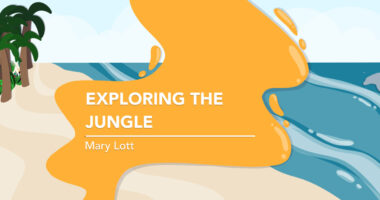Those of us with CAD have our own ‘Run for the Roses’
It's Kentucky Derby time, the big event in a sport I love

Grabbing the best spot in front of the TV, I make myself comfortable on pillows. It’s time for the Kentucky Derby.
The first Saturday in May is reserved for me to enter a world of majestic horses, excitement, and mint juleps. In the week leading up to the derby, I research winning records, jockeys, trainers, and various owners. Then, I look at the odds of winning on the morning line, which is the ratio of the perceived chances of winning based on a $1 bet.
I carefully watch when the call for “riders up” sounds. I particularly note the spirit of individual horses and how they respond to crowd noises. Then, I lock in my picks. (I think I bet online once, literally buying into my horse. I lost.)
At long last comes the post parade, when horses go from the paddock to the starting gate past the stands, and the playing of “My Old Kentucky Home.” The pageantry always thrills me: Men dress up in suits, and women wear huge, extravagant hats. Finally, the crowd hushes as the starting gates open and the race begins.
Playing the odds
Usually, the oddsmakers get it right and the favorite wins. But every now and then, a long shot emerges victorious. Such was the case with a horse named Donerail in 1913. At 91-to-1 odds, the payout on a $2 bet was $184.90. That was very good money at the time for a two-minute run in a mile-and-a-half race.
Those of us with cold agglutinin disease (CAD) have won our own long-shot races. CAD affects about one person per million every year (incidence rate) in the U.S., according to the National Organization for Rare Disorders. The density of CAD patients varies from country to country and climate to climate. (A 2020 study found CAD’s prevalence in the Norwegian population to be 20 cases per million, for example.) Like racehorses, we require special care to function at the peak of our abilities.
We CAD patients need to rest more than other people. We’re always fatigued, and we suffer from aches and pains that come and go with no apparent rhyme or reason. We cannot maintain continuous activity and need lots of breaks throughout the day.
Racehorses are notoriously high-strung and need to be coddled. Some trainers purchase goats to accompany fidgety horses in their stalls. If these goats are stolen from the stalls, the horses may pace back and forth, exhausting themselves. Woe to the trainer if someone has “gotten their goat.”
Likewise, weather and track conditions are additional factors to consider. Horses must adapt to fast, sloppy, or muddy tracks. Some horses are even known as “mudders” when they run well on a muddy track. Wise jockeys wear several sets of goggles so they can sling off one when it becomes muddy. In this manner, they can continue racing with clear vision.
Because I have CAD, I always check weather and wind conditions. A recent 30-second exposure to blustery winter conditions, for example, caused a return of hemolysis, or the destruction of red blood cells. I’m definitely not known as a “snow bunny,” but rather more of a “sun worshipper.”
Good owners and trainers take care to ensure proper health and nutrition to keep their horses in top form. They make sure their racers are surrounded by a calm environment to reduce stress. Likewise, I live in such a manner to keep my stress levels as low as possible so that I can operate at optimal performance levels.
Finally, I have regular checkups with my hematologist. My blood is checked regularly to monitor hemoglobin and blood levels. That provides a slew of information showing my progress in the race to score a victory over CAD. My doctor then decides on treatment based on this information.
The winner’s circle
One of the most exciting races was last year’s Kentucky Derby. The field of 20 was fairly packed as they rounded the final turn. But one horse snuck through on the inside of the curve and pulled out in front. The former leaders rallied and closed the distance. The race was neck-and-neck, with Mystik Dan winning in a thrilling photo finish.
Most “CADdies,” as we call ourselves, don’t run races, but rather plod through our lives. We don’t run the “fastest two minutes in sports” as the horses do. Rather, we’re in training throughout our lives to meet the daily challenges and excel in our activities. We can do this and emerge in our own winners’ circles.
Note: Cold Agglutinin Disease News is strictly a news and information website about the disease. It does not provide medical advice, diagnosis, or treatment. This content is not intended to be a substitute for professional medical advice, diagnosis, or treatment. Always seek the advice of your physician or other qualified health provider with any questions you may have regarding a medical condition. Never disregard professional medical advice or delay in seeking it because of something you have read on this website. The opinions expressed in this column are not those of Cold Agglutinin Disease News or its parent company, Bionews, and are intended to spark discussion about issues pertaining to cold agglutinin disease.






Leave a comment
Fill in the required fields to post. Your email address will not be published.